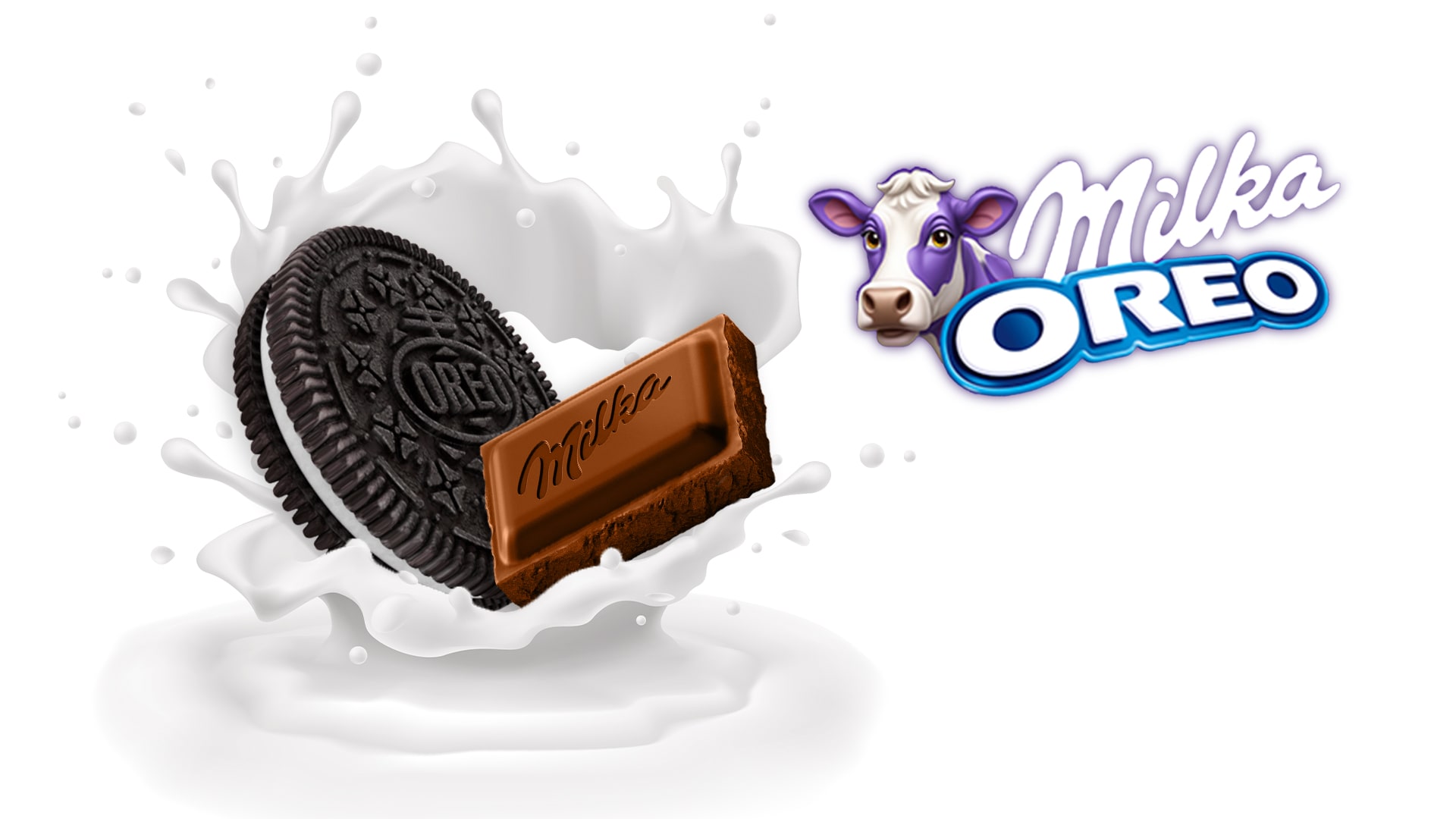
the motto “together we are stronger” holds more truth than ever before. With markets saturated with options and consumers bombarded with choices, standing out requires a strategic approach.
This is where the power of collaboration comes into play. It is an increasingly prevalent strategy among companies looking to make a mark in their respective industries.
Whether through joint products, services, or marketing campaigns, co-branding offers a unique opportunity for companies to tap into each other’s strengths and resources to enhance their market presence and relevance.
In this article, you’ll explore co-branding from its definition to real-life examples and effective strategies.
What Is Co-Branding?
Co-branding is a strategic marketing cooperation between two or more brands to collaborate on a product or service. This collaboration allows each brand to make the most of the strengths and attributes of the other to create a mutually beneficial relationship.
Co-branding typically involves combining the partnering brands’ names, logos, or other identifying elements. It is aimed to create a new, unique product or service.
With 71% of consumers expressing appreciation for co-branded products, businesses are increasingly interested in pursuing partnerships, according to research by Visual Objects.
By using each other’s existing customer base, market reach, and brand equity, businesses can boost sales, elevate brand perception, and create added value for consumers.
While co-marketing and co-branding are often used interchangeably, they represent distinct strategies. Co-marketing typically involves two or more companies joining forces to promote a single product or service.
On the other hand, co-branding focuses on creating a new product or service that bears the combined identities of the partnering brands. While both strategies involve brand collaboration, co-branding involves deeper integration and co-creation of products or services.
Types of co-branding strategies
There are various approaches to co-branding, each offering unique opportunities for brands to collaborate and create value together. Whether combining products or tapping into geographic or sponsorship opportunities, co-branding enables brands to enhance their strengths and reach new audiences.
1.Product Co-Branding
Two or more brands join forces to create a new product. To accomplish this, they incorporate elements of each brand into the final offering. For instance, Microsoft and Nokia collaborated to create the Lumia series of smartphones.
As a result, the combined product benefits from the reputation and strengths of each brand. This approach attracts a broader audience and increases market share.
2.Ingredient Co-Branding
One brand’s ingredient or component is featured in another brand’s product. This collaboration highlights the quality or uniqueness of the featured ingredient.
One example is Intel processors being prominently featured in various computer brands’ products, showcasing Intel’s high-performance computing capabilities. It adds value to the final product and enhances its consumer appeal.
3.Joint Venture Co-Branding
Brands form separate entities or partnerships to develop and market products or services. Similarly, Sony and Ericsson formed a joint venture to create Sony Ericsson mobile phones.
By sharing resources, expertise, and risks, brands can capitalize on each other’s strengths and create mutually beneficial outcomes.
4.Complementary Co-Branding
Brands from different industries collaborate to create products or services that complement each other. For example, Apple partnered with Nike to create the Nike+ iPod Sport Kit.
By targeting similar or overlapping customer segments, these collaborations can expand market reach and offer consumers comprehensive solutions or experiences.

5.Geographic Co-Branding
Brands use specific locations to enhance their association with local culture or heritage, such as the Hershey’s Chocolate World theme park in Hershey, Pennsylvania.
By aligning with a particular location, brands can tap into consumers’ emotional connections and preferences in that region. Therefore, they can strengthen brand loyalty and recognition.
6.Sponsorship Co-Branding
One brand sponsors an event, organization, or initiative, leading to co-branded marketing efforts. It highlights both brands’ involvement and support. For instance, Coca-Cola sponsored the Olympic Games, resulting in co-branded advertising and promotions.
This collaboration allows brands to associate themselves with positive associations or causes, enhancing their brand image and visibility.

Understanding the various types of co-branding is crucial, but it’s equally important to grasp the benefits and challenges of each approach.
By weighing the potential advantages and drawbacks, you can make informed decisions and navigate co-branding initiatives effectively to maximize success.
What are co-branding opportunities?
Co-branding offers various opportunities and benefits for the businesses involved:
1.Expanded Market Reach
Co-branding broadens the reach and visibility of both brands, reaching untapped markets and potential audiences previously out of reach.
2.Leveraging Strengths
By partnering with complementary brands, companies can channel through each other’s strengths and resources. This approach leads to more innovative and high-quality products or services.
3.Cost Savings
Collaborating on joint ventures can result in savings as companies share expenses, such as marketing and production costs.
4.Enhanced Brand Credibility
Co-branding can strengthen brand credibility, image, and awareness, as consumers often associate the combined brand with increased trust and value. It results in increased consumer recognition and loyalty.
5.Shared Risks and Responsibilities
Co-branding provides a safety net for companies venturing into new markets or product categories. By sharing risks and responsibilities, they can minimize potential losses and maximize opportunities for success.
6.Visibility in New Niches
Collaborating with a brand in a different niche can provide visibility and access to new markets previously untapped.
7.Boosting Sales
Co-branding initiatives can lead to increased sales by attracting more customers and offering unique value propositions.
8.Product or Service Development
Collaborating allows companies to create novel products or services that aren’t possible individually.
9.Increasing Competitiveness
Co-branding can strengthen a company’s competitive position by offering differentiated offerings and enhancing market presence.

Overall, co-branding presents a valuable opportunity for brands to collaborate, innovate, and create unique value propositions that resonate with consumers in today’s competitive marketplace.
However, both parties must maintain consistent quality standards and deliver on the promises made through the co-branded offering. As a result, they can preserve the trust and loyalty of consumers.
Co-Branding Challenges
Co-branding comes with its own set of risks and challenges. Here are some of the critical risks associated with co-branding:
2.Brand Dilution
Co-branding can dilute the brand equity of both partnering companies if consumers perceive the collaboration as mismatched or if one brand is significantly more potent than the other. It can result in confusion and a loss of trust among consumers.
Read more about Brand Dilution here: Brand Dilution: Definition, Strategies, Examples, And Prevention Tactics
3.Legal Issues
Co-branding agreements require careful legal consideration, including trademark usage, intellectual property rights, licensing agreements, and liability issues. Failure to adequately address these legal aspects can lead to costly disputes or lawsuits.
4.Control and Decision-Making
Co-branding can sometimes lead to conflicts over control, decision-making, and creative direction. If one partner feels their brand is being overshadowed or misrepresented, it can cause tension.
5.Cannibalization
Co-branding products or services may cannibalize sales of existing offerings from each brand rather than generating revenue. This risk is particularly relevant if the co-branded product competes with the partners’ offerings.
6.Reputation Damage
If one partner encounters negative publicity or experiences a decline in reputation, the other brand may also suffer by association, damaging both brands’ images.
7.Cultural Mismatch
Co-branding partnerships from different cultures or regions may also encounter challenges related to language barriers, communication styles, business practices, and consumer preferences. Failure to bridge the gaps can weaken the effectiveness of the collaboration.
8.Public Disinterest
If the co-branding union fails to resonate with the public or capture their interest, it may result in limited consumer engagement and poor sales performance for both brands. It can also confuse consumers if the partnership needs to be communicated clearly.
9.Unequal Benefit Distribution
There’s a risk that one brand may reap more significant benefits from the collaboration. At the same time, the other receives minimal recognition or value in return, potentially leading to dissatisfaction or tension between partners.
Co-Branding Strategies
Once you’ve chosen the type of co-branding and understood its benefits and challenges, it’s crucial to develop effective strategies. The following strategies help maximize the success of your collaboration and ensure that both brands reap the benefits of the partnership.
1.Retention Strategy
This involves collaborating to maintain the current market position using each other’s strengths and resources. By joining forces, they aim to defend against competition, retain existing customers, and sustain their market share.
2.Uniform Global Strategy
It involves co-branding to create a consistent brand image across different regions or markets. By collaborating, brands ensure that their messaging, values, and visual identity remain cohesive worldwide. It strengthens brand recognition and loyalty on a global scale.
3.Reinforcement Strategy
Co-branding is used to enhance the perceived value or appeal of products or services by injecting a fresh perspective and dimension into the existing brand environment. As a result, it elevates brand image, draws in new customers, and drives increased sales.
4.Diversification Strategy
Brands collaborate to enter new markets or product categories. They make the most of each other’s expertise or resources, expand into areas outside their traditional scope, diversify their offerings, and reach new customer segments.
Throughout your co-branding journey, it’s vital to have clear goals and ensure both brands are on the same page. You need to agree on what you want to achieve and how you will do it.
It’s also crucial to ensure that your values and the values of the brand you’re partnering with align well. This means you share similar beliefs and principles, which can make your collaboration smoother and more successful.
Once you’ve sorted your objectives and values, it’s time to think about how you will let people know about your collaboration. A solid marketing plan will help you effectively promote your co-branded product or service.
Finally, remember to keep an eye on how things are going. Regularly checking your performance allows you to make any necessary changes and keep your co-branding efforts on track.
Innovation and Cutting-Edge Technologies
Innovation is a cornerstone of successful co-branding initiatives, driving creativity and differentiation in the marketplace. By embracing innovation, brands can explore new ideas, approaches, and technologies that set them apart from competitors.
In the context of co-branding, innovation enables partners to develop unique products, services, or experiences that capture consumers’ attention and drive excitement around the collaboration.
Whether developing innovative partnership concepts, crafting compelling storytelling, or producing engaging multimedia content, our creative digital solutions help you differentiate yourself from the competition.
Utilizing innovative solutions and cutting-edge technologies enables brands to create immersive and engaging co-branded experiences that resonate with their target audience.
From metaverse activations to interactive digital solutions, the integration of technology elevates the co-branding experience, offering unique and memorable interactions for consumers.
Additionally, innovation fuels creativity in co-branding strategies, allowing brands to explore new concepts, experiment with novel approaches, and stay ahead of evolving consumer preferences.
By embracing innovation and technology, brands can unlock new opportunities for collaboration, strengthen brand equity, and drive mutual growth in the competitive marketplace.
Co-Branding Examples
The examples below showcase the creativity, ingenuity, and strategic thinking that drive practical co-branding efforts, from iconic collaborations between industry giants to innovative pairings between unexpected brands.
Red Bull and GoPro
Red Bull and GoPro have collaborated on several occasions, benefiting from their strengths to create impactful co-branding initiatives. One notable partnership involved Red Bull sponsoring extreme sports events and using GoPro’s high-definition cameras to capture adrenaline-fueled moments.
This collaboration showcased GoPro’s innovative technology and aligned perfectly with Red Bull’s brand image of adventure and excitement.
Additionally, both brands have collaborated on content creation. As a case in point, Red Bull provided thrilling sports footage captured with GoPro cameras for use in marketing campaigns and social media content.
This co-branding partnership has proven to be highly successful, allowing Red Bull and GoPro to reach new audiences and reinforce their positions as leaders in their respective industries.
BMW and Louis Vuitton
BMW and Louis Vuitton collaborated on a unique co-branding initiative that showcased their shared commitment to luxury and craftsmanship. The partnership resulted in a limited edition luggage set designed specifically for the BMW i8 plug-in hybrid sports car.
Louis Vuitton’s master craftsmen designed the luggage set to complement the design and style of the BMW i8. It featured innovative materials and meticulous attention to detail.
This collaboration allowed both BMW and Louis Vuitton to tap into each other’s expertise and prestige, seamlessly integrating luxury automotive design with high-end luggage craftsmanship.
The limited edition luggage set symbolized exclusivity and sophistication, attracting customers who appreciate the finer things in life.
The BMW and Louis Vuitton co-branding partnership exemplifies the fusion of automotive excellence and luxury fashion. Finally, their collaboration resulted in an exceptional product offering for their affluent clientele.
Visa and Spotify
Visa and Spotify teamed up in a strategic co-branding effort to offer exclusive benefits to Visa cardholders. Through this collaboration, Visa cardholders gained access to special discounts, promotions, and experiences within the Spotify platform, such as premium memberships at reduced rates.
Additionally, the partnership included joint marketing campaigns and initiatives to promote both brands and encourage customer engagement.
Through Visa’s extensive network of cardholders and Spotify’s popular music streaming platform, the collaboration aimed to enhance the value proposition for customers of both brands.
This co-branding initiative strengthened customer loyalty and engagement and showcased the power of collaboration between two industry leaders in finance and entertainment.
Overall, the Visa and Spotify partnership demonstrates how co-branding can create mutually beneficial opportunities for brands to enhance their offerings and drive customer satisfaction.
Starbucks and Spotify
Starbucks and Spotify joined forces in a co-branding effort to enhance the customer experience in Starbucks stores. Starbucks integrated Spotify’s music streaming service into its mobile app through this partnership. As a result, customers were enabled to access curated playlists while enjoying their favorite beverages.
This collaboration aimed to create a seamless connection between the Starbucks café experience and the music that customers love, enhancing the ambiance and atmosphere within Starbucks stores.
Moreover, Starbucks employees were given access to Spotify Premium accounts, enabling them to influence the playlist selection in-store and further customize the music experience for customers.
This co-branding initiative strengthened customer engagement and loyalty and showcased the power of collaboration between two industry leaders in coffee and music streaming.
The Starbucks and Spotify partnership exemplifies how co-branding can elevate the customer experience and drive brand affinity in a competitive market landscape.
LEGO and Star Wars
LEGO and Star Wars have collaborated in an iconic co-branding partnership that has captivated fans of both franchises worldwide. Through this collaboration, LEGO has produced a vast array of Star Wars-themed building sets.
Thus, fans can recreate their favorite scenes and characters from the beloved film saga using LEGO bricks. These sets range from intricate starships and iconic vehicles to detailed movie scenes. They also provide endless hours of creative play for fans of all ages.
The LEGO Star Wars sets feature authentic designs and include mini-figures of popular characters such as Luke Skywalker, Darth Vader, and Princess Leia, adding to the immersive experience.
This co-branding initiative has strengthened the bond between LEGO and Star Wars enthusiasts and expanded the reach of both brands to new audiences, fostering creativity, imagination, and storytelling in a galaxy far, far away.
Think Beyond the Surface
As we conclude this exploration of co-branding, it’s essential to recognize the less-known facts that underpin successful partnerships.
While many are familiar with the surface-level benefits of co-branding, such as expanded reach and shared resources, the lesser-known aspects like meticulous research, cultural alignment, and strategic planning truly define the success of collaborative ventures.
The power of storytelling, customer experience, and long-term relationship building cannot be overstated in the co-branding equation. By delving into these more thought-provoking questions in co-branding, businesses can unlock hidden opportunities, develop authentic connections, and ultimately drive sustainable growth through strategic collaborations.
As you start your co-branding journey, explore deeper and embrace the nuances that can genuinely set your partnerships apart.
Explore Co-Branding Opportunities with Our Expert Strategists
If you’re ready to explore the potential of co-branding for your business, we’re here to help. Our team connects businesses with our marketing strategists, who can unlock new opportunities through effective co-branding initiatives.
Whether you’re looking to expand your reach, enhance brand credibility, or drive growth through strategic partnerships, contact us at Dream Farm Agency so that our network of experienced professionals is ready to assist you.
Dream Farm Agency‘s branding and marketing strategists can assist you in selecting the best type of co-branding and connecting with the most suitable brands for your goals. Let us know about your ideas on the power of collaboration in the comment box below.

Rojan



